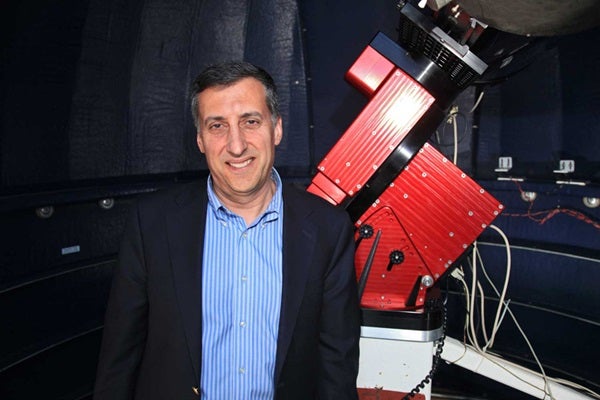A team led by an Indiana University astronomer has found a sample of massive galaxies with properties that suggest they may have formed recently. This would run counter to the widely held belief that massive, luminous galaxies (like our own Milky Way Galaxy) began their formation and evolution shortly after the Big Bang, some 13 billion years ago. Further research into the nature of these objects could open new windows into the study of the origin and early evolution of galaxies.
John Salzer, principal investigator for the study, said the 15 galaxies in the sample exhibit luminosities — a measure of their total light output — indicating that they are massive systems like the Milky Way and other giant galaxies. However, these particular galaxies are unusual because they have chemical abundances that suggest very little stellar evolution has taken place within them. Their relatively low abundances of “heavy” elements — elements heavier than helium, called “metals” by astronomers — imply the galaxies are cosmologically young and may have formed recently.
The chemical abundances of the galaxies, combined with some simple assumptions about how stellar evolution and chemical enrichment progress in galaxies, suggest that they only may be 3 or 4 billion years old. Most theories of galaxy formation predict that massive, luminous systems like these should have formed much earlier.
If this overall interpretation proves correct, the galaxies may allow astronomers to investigate phases of the galaxy formation and evolution process that have been difficult to study because they normally occur at such early times in the universe. “These objects may represent a unique window on the process of galaxy formation, allowing us to study relatively nearby systems that are undergoing a phase in their evolution that is analogous to the types of events that, for most galaxies, typically occurred much earlier in the history of the universe,” Salzer said.
The discoveries are the result of a multi-year survey of more than 2,400 star-forming galaxies called the Kitt Peak National Observatory International Spectroscopic Survey (KISS). The survey was designed to collect basic observational data for a large number of extragalactic emission-line sources. Additional rounds of follow-up spectroscopy for the sources discovered in the initial survey led to the discovery of the 15 luminous, low-abundance systems.
“The reason we found these types of galaxies has to do with the unique properties of the KISS survey method,” Salzer said. “Galaxies were selected via their strong emission lines, which is the only way to detect these specific galaxies.” Previous surveys done by others have largely missed finding these unusual galaxies.
While the hypothesis that these galaxies are young is provocative, it is not the only possible explanation for these enigmatic systems. An alternative explanation proposes that the galaxies are the result of a recent merger between two smaller galaxies. Such a model might explain these objects, since the two-fold result of such a merger might be the reduction of metal abundances due to dilution from unprocessed gas and a brief but large increase in luminosity caused by rampant star formation. As a way to distinguish between these two scenarios, Salzer and his team intend to request observing time on NASA’s Hubble Space Telescope to use high-resolution imaging to determine whether or not the systems might be products of merging.










